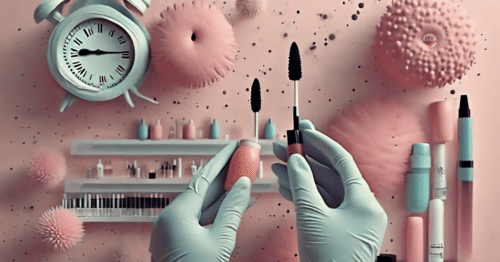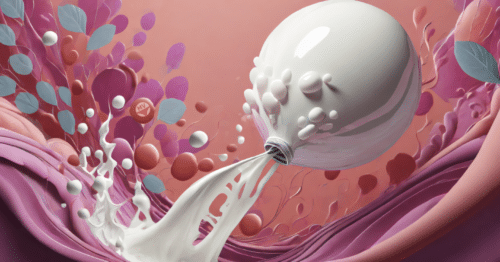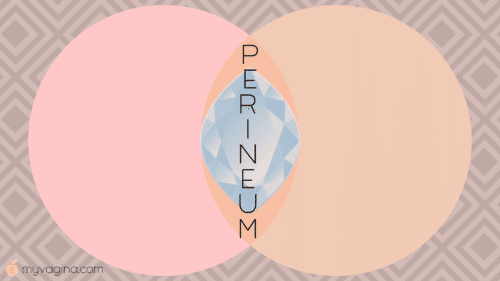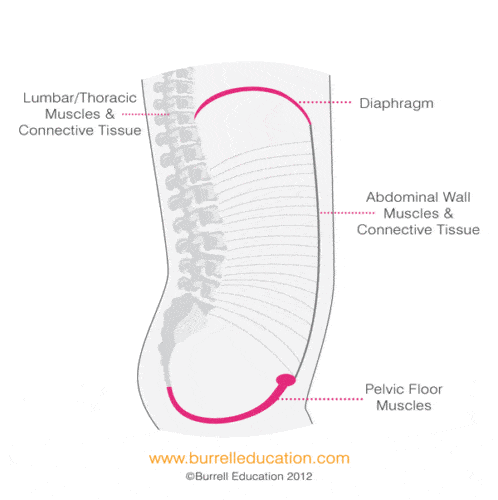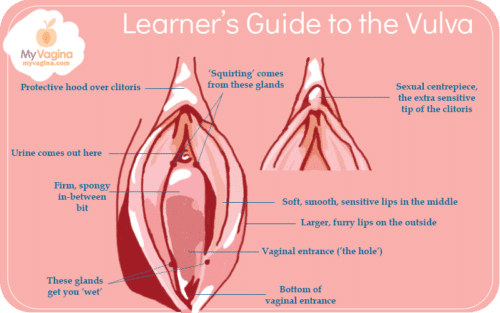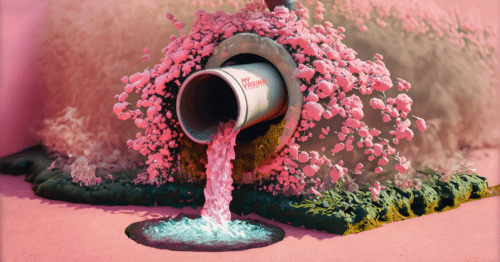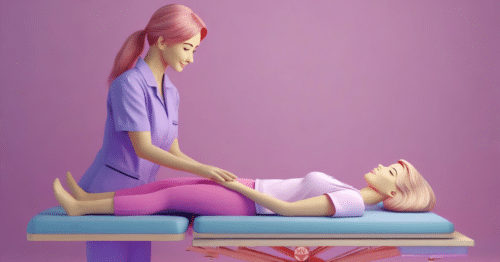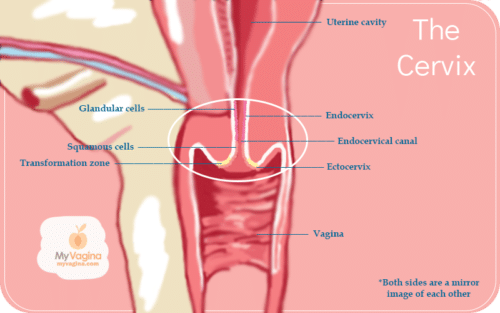Skip to:
- Latest in anatomy news on My Vagina
- Anatomy for learners
- Anatomy for parents
- Labia (lips)
- Clitoris
- Clitoral hood
- Perineum
- Vagina
- Pelvic floor
- Ovaries
- Fallopian tubes
- Uterus
- Cervix
Latest in Anatomy
How to make a pelvic exam and pap test easier
Pro physiotherapist tips on how to make a pap smear less terrible.
Dec
Breastfeeding: impact on estrogen levels, the vagina and pelvic floor
Learn how breastfeeding impacts oestrogen levels, and how that in turn impacts vaginal and pelvic floor health.
Jan
Understanding hiatal, umbilical and inguinal hernias
If your three body cavities are putting pressure on each other, the result can be hernias and pelvic problems.
Understanding the perineum
The perineum is the area between the vulva and the anus, between the thighs.
Sep
Start your search here
Anatomy - for learners
The vulva and vagina through ages and changes
An overview of how your vulva and vagina changes throughout your life, from being a newborn to old age.
How to feel your own cervix
Learn how to touch your own cervix, and use it to figure out what's happening in your menstrual cycle - you can tell when you are ovulating, when you are close to your period, and solve other mysteries!
The hymenal ring, remnants and tags
Hymenal rings and tags are completely normal, however can be a source of discomfort, pain and embarrassment for some of you.
Everything you need to know about pap tests and pap smears
Pap tests (also called Pap smears) are done periodically to check the cervix for abnormal changes that could lead to cervical cancer.
Feeling your cervix for signs of ovulation
You can feel where you're at in your cycle by feeling your cervix - is it high, soft and wet? Maybe you're ovulating. If it's low and hard, you may be about to get your period.
When to worry about your cervix
What is your gynaecologist really looking for when they look at your cervix?
What does it feel like for a girl? A flesh comparison
Ever wondered what a penis or clitoris feels like? You have what you need to find out!
Understanding the pelvic floor
The pelvic floor is critical for supporting pelvic organs, keeping us going to the toilet effectively, and enjoying sex.
Oct
Pelvic floor exercises overview
Some ways to find and strengthen your pelvic floor muscles, particularly after any pelvic organ issue (bladder, vagina, bowel).
Understanding female anatomy
Here we take a closer look at what the female reproductive system looks like.
A hands-on guide to getting to know your vulva
We explain how to truly investigate your vulva so you know what every part is called, what it feels like, and what it should be doing.
Aug
Anatomy - for parents
Gynaecology in children and babies
We briefly overview the vulva and vagina from a developmental perspective - what to expect.
The vulva and vagina through ages and changes
An overview of how your vulva and vagina changes throughout your life, from being a newborn to old age.
Vag basics: understanding anatomy
Explore the fascinating anatomy of the vagina and vulva, including their functions, parts, and how they contribute to sexual pleasure and health.
Jan
Understanding female anatomy
Here we take a closer look at what the female reproductive system looks like.
Labia
A serious chat about your flaps – understanding labiaplasty
Love 'em or hate 'em, your labia are yours, and you can have a labiaplasty if you want to! A long read about labiaplasty.
The practice of labial stretching
Labia stretching is a common practice amongst some African women, and is said to improve squirting abilities.
Clitoris
The clitoral pump
Clitoral pumps can be used both for sexual pleasure and medically improving blood flow to the genitals.
Clitoridectomy
Clitoridectomy is the complete or partial removal of the clitoris, which may be a course of action it the clitoris is oversized and the owner makes the big decision to part with it.
Sep
G-spot and clitoris augmentation and amplification
G-spot and clitoris augmentation can enable better sexual experiences and more intense orgasms.
The clitoris and female orgasm
The clitoris is way bigger than you think, and has appendages that get erections, just like penises do. The female orgasm relies heavily on the internal structures of the clitoris, and their sufficient arousal.
Clitoral Hood
Skene's Glands (Female prostate)
Understanding the Skene’s glands
The Skene's glands are located next to the urethra, and produce fluids that support vaginal and sexual health.
Apr
Bartholin Glands
Bartholin glands
Your Bartholin's glands are responsible for making you wet when you are turned on, producing moisture/fluid that lubricates the outside of your vulva.
Perineum
Understanding the perineum
The perineum is the area between the vulva and the anus, between the thighs.
Sep
Pelvic Floor Muscles
How to make a pelvic exam and pap test easier
Pro physiotherapist tips on how to make a pap smear less terrible.
Dec
Breastfeeding: impact on estrogen levels, the vagina and pelvic floor
Learn how breastfeeding impacts oestrogen levels, and how that in turn impacts vaginal and pelvic floor health.
Jan
Understanding hiatal, umbilical and inguinal hernias
If your three body cavities are putting pressure on each other, the result can be hernias and pelvic problems.
Understanding the pelvic floor
The pelvic floor is critical for supporting pelvic organs, keeping us going to the toilet effectively, and enjoying sex.
Oct
Pelvic floor exercises overview
Some ways to find and strengthen your pelvic floor muscles, particularly after any pelvic organ issue (bladder, vagina, bowel).
Osteopathy and the pelvis
Pelvic massage is an underappreciated therapy for many pelvic and vaginal conditions, involving manipulating structural issues and increasing blood flow.
May
Ovaries
Feeling your cervix for signs of ovulation
You can feel where you're at in your cycle by feeling your cervix - is it high, soft and wet? Maybe you're ovulating. If it's low and hard, you may be about to get your period.
How to track your menstrual cycle and identify ovulation
Not sure when or if you ovulate? We run you through charting your cycles and how to check if and when you are ovulating using some very simple tips and tricks. No temperatures!
Cervix
Feeling your cervix for signs of ovulation
You can feel where you're at in your cycle by feeling your cervix - is it high, soft and wet? Maybe you're ovulating. If it's low and hard, you may be about to get your period.
How to feel your own cervix
Learn how to touch your own cervix, and use it to figure out what's happening in your menstrual cycle - you can tell when you are ovulating, when you are close to your period, and solve other mysteries!
When to worry about your cervix
What is your gynaecologist really looking for when they look at your cervix?
Everything you need to know about pap tests and pap smears
Pap tests (also called Pap smears) are done periodically to check the cervix for abnormal changes that could lead to cervical cancer.
A normal cervix and how to care for it
Your cervix is the gatekeeper to the uterus, blocking and allowing entry as required, and changing across your menstrual cycle.
Jun
The most comprehensive vaginal microbiome test you can take at home, brought to you by world-leading vaginal microbiome scientists at Juno Bio.
Unique, comprehensive BV, AV and 'mystery bad vag' treatment guide, one-of-a-kind system, with effective, innovative treatments.
Promote and support a protective vaginal microbiome with tailored probiotic species.


